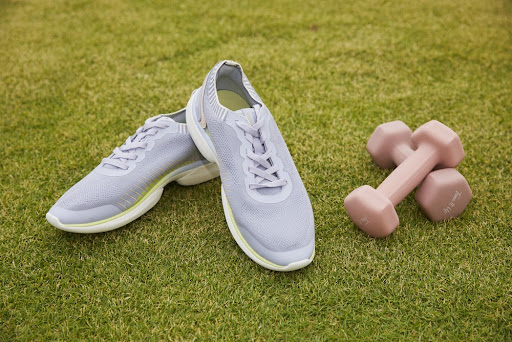Getting back into working out isn’t just emotionally agonizing, it can be physically taxing too even if you are equipped with the right tools and orthotics to get the job done. You might be flung into the painful world of Delayed Onset Muscle Soreness (DOMS) where you can deadlift 300 pounds on a Monday and find it impossible to bend down to tie your shoelaces by Wednesday.
But don’t worry, a sore muscle is far from a bad sign. They’re an indicator of an essential component of regular exercise: recovery. But what exactly is recovery and why does it matter
Recovery 101
Informally, the recovery process is the best part of any harrowing workout regimen: the rest days. Formally, recovery is the period of adaptation from exercise-induced stress to homeostasis.
After a workout, the body naturally works toward achieving a state of relaxation. It does this by returning your heart rate back to a resting state, recovering depleted stores of glucose and glycogen by signaling hunger, replenishing lost fluids by making you thirsty, and repairing intentionally damaged muscle tissue, with the latter occurring mainly while you sleep.
It’s helpful to think of three broad types of recovery:1
- Immediate recovery – This is the rest in the short time between successive periods of stress such as between reps in a workout routine. For example, your heart rate increases and your breathing deepens to improve blood flow and oxygenate cells.
- Short-term recovery – This rest occurs between sets of workouts such as between sets of interval sprints or high-intensity circuits. For instance, activation of the parasympathetic nervous system leaves you feeling relaxed.
- Long-term recovery – This is the rest that occurs between workouts. As an example, muscle tissue repair in the form of DOMS occurs 1-2 days after working out with the replenishment of glycogen stores, and more.
This article will primarily address what proper long-term recovery looks like. You can interrupt this process by not giving your body the recovery time it needs to achieve homeostasis. Just like a treadmill, low-quality rest between workouts will get you nowhere.
On the other hand, high-quality rest will give you the necessary energy to exercise at an equivalent or higher intensity than before. In other words, such rest is vital to improving your long-term health, athletic performance, and general wellbeing. Without it, you are committing to a lifetime of injury, future health complications, and—perhaps worst of all —endless DOMS.
How Long Does Proper Muscle Recovery Take?
So let’s address the elephant in the room: What is the optimal recovery timeline for the average person? Although the question is tempting, the truth is that there isn’t one universal answer. In fact, understanding muscle recovery requires rejecting the one-size-fits-all approach.
A beginner resistance-training workout usually needs a day-long period of recovery while a more demanding high-intensity interval workout will mandate two to three days. But that’s not all. Your muscle recovery time is also dependent on your level of fitness, age, diet, the intensity, duration, and volume of your exercise routine, your physiological state on the day of your workout, and more.
Instead of looking for an all-encompassing answer, it’s much wiser to account for everything that can affect your post workout recovery. This includes:
- The quality of rest you get
- Your nutritional profile
- The intensity of stress you are dealing with
- Your workout regimen including exercise frequency and intensity
What Post Workout Recovery Looks Like
There isn’t just one way to rest after a workout.2 Here are some of the methods through which you can incorporate healthy muscle recovery into your lifestyle.
Recovering Passively
Passive recovery is synonymous with being a couch potato between workouts. It is a period of complete rest where you avoid any form of exercise.
This type of rest works best for certain kinds of workouts like high-intensity interval workouts or training for a marathon. But as specified earlier, your fitness level and other factors will play a key role in how much passive recovery you require.
Recovering Actively
Active recovery involves light movements between workouts. If you love walking, get into your slip-on sneakers and head to your favorite park, or take your bike for a ride around the neighborhood. This form of recovery is recommended for anybody experiencing energy slumps from going from intense periods of activity to complete inactivity.
These low-impact movements promote blood flow throughout the body to speed up muscle repair. Since blood works as a transport system, it also circulates and discards the waste built up in your body from the stress of an intense workout. The key is selecting movements that keep your body engaged without making you fatigued.
Releasing Muscle Tissue
Your muscle tissue undergos physical damage when you exercise. But what doesn’t kill them, makes muscle tissues stronger. As they repair, they grow bigger, denser, and in nearly all cases, tighter. For this reason, releasing strained muscles is an effective way to recover your body after strenuous training. You can do this by:
- Dynamic stretching before working out
- Foam rolling right before and after exercise
- Massaging problem areas on rest days
Sleeping Well
Any regular gym-goer is aware of the difference a good night’s rest makes, especially for hitting record-breaking lifts. Sleep works because, once you enter the deep sleep stage, your body produces a good amount of human growth hormone (HGH), while keeping cortisol low.3
This hormonal state is optimal for muscle growth and a vital component in recovery. To get adequate amounts of deep sleep, keep your environment cool, block out all sources of light, and do your best to fall asleep at the same time regularly.
Eating Right
As overstated as the phrase “abs are made in the kitchen” is, it’s difficult to undermine the role nutrition plays in muscle development. Muscles are actual protein, or at least 80% of them are.4
This protein needs to be sourced from the essential amino acids found in high-quality food sources.
Additionally, getting a good dose of dietary vitamins and minerals impacts aspects of health like the synthesis of proteins, bone strength, organ function, and immunity. To put it simply, proper recovery after workout is incomplete without sound nutrition. Incorporate more lean proteins, whole grains, raw and cooked vegetables, fruit, and probiotics into your diet.
Tips To Improve Recovery And Prevent Injury
With so many variables to account for, getting recovery right might appear challenging. But here are some tips to keep you on track.
#1 Determine Your Recovery Needs
Based on your age, lifestyle, fitness level, type of workout, and fitness goals, your period of recovery can look very different from someone else’s. Determine the amount of recovery time you need to get high-quality rest.
This will require some trial and error before you determine your natural recovery period, and which form of rest works best for you. A typical recovery timeline can be anywhere between 6 hours (usually for athletes or competition training) to 48 hours between workouts.
#2 Split Training By Muscle Group
Cross-training is the practice of working separate muscles in separate workouts. Hence, cross-training affords you the benefit of having an active lifestyle while incorporating recovery.
You can cross-train by doing the same or different workouts. For instance, running, boxing, and strength-training work different movements, endurance states, and muscle groups.
However, some people cross-train by only practicing resistance training splits. Some popular workout splits for strength training circuits are as follows:5
- Upper-lower split – Involves working your back, chest, biceps, triceps, and core on one day and saving your glutes, hamstrings, quad muscles, and calves for a separate day.
- Push-pull-Legs split – Involves using pushing muscles like your chest, triceps, and shoulders on one day, working pulling muscles like your back and biceps on the next day, and all leg muscles on the third day.
- Full-body split – Involves working all muscle groups in each workout but varying the compound movements used to target them on different days. For instance, squats on day one followed by deadlifts on day two.
When splitting workouts, remember to account for your preferences and lifestyle. A key facet here is that you can follow the aforementioned workout splits by mixing different styles of exercise. For example, you can incorporate a push-day and a pull-day at the gym but opt for swimming as a way to train your legs.
#3 Incorporate Regular Flexibility and Mobility Training
Flexibility training isn’t just about getting the splits. It stimulates proper recovery after workouts by protecting muscles from tears, elongating muscles that have grown short from strength training, and improving posture, and alignment.
Similarly, training your mobility improves your range of motion, an essential ability for day-to-day tasks. Both flexibility and mobility decline with age. Other factors like regular weightlifting or chronic inactivity can accelerate this decline.
Perhaps the most important point is the fact that your level of mobility and flexibility determine how prone to injuries you may be.6
Stretching is also one of the most important steps of what to do before exercise and after exercise. By incorporating dynamic stretches as a warmup, static stretching on your rest day, and mobility training post working out, you can set yourself up for good recovery between workouts, while simultaneously preventing potential injuries. A bonus is that this type of training makes for a great stressbuster. So, be sure to learn how to stretch properly.
For Shoes That Support Your Recovery, Try Vionic
Like icing on a cake (or blueberries in a protein shake) the right workout shoe boosts recovery by protecting you from injuries like heel pain and foot fatigue. Blending style with the seamless support of orthotics, Vionic’s podiatrist-designed footwear incorporates excellent arch support with flattering silhouettes.
With a spectrum of sneakers ranging from walking shoes for men to recovery sandals, Vionic has ideal footwear for your recovery. What’s more, every pair promotes healthy alignment from the ground up with innovative Vio-Motion Support technology. For foot support to ensure your workout HIITs the spot, try Vionic.
Sources:
- NASM. Exploring the Science of Recovery. https://blog.nasm.org/the-science-of-recovery
- Everyday Health. Post-Workout Muscle Recovery: How To Let Your Muscles Heal and Why. https://www.everydayhealth.com/fitness/post-workout-muscle-recovery-how-why-let-your-muscles-heal/
- NCBI. Role of Sleep and Sleep Loss in Hormonal Release and Metabolism. https://www.ncbi.nlm.nih.gov/pmc/articles/PMC3065172/
- iPB. Protein, Strength and Muscle Growth. https://www.internationalproteinboard.org/protein-matters/Proteinstrengthandmusclegrowth.htm
- Set for Set. The 5 All-Time Best Workout Splits. https://www.setforset.com/blogs/news/best-workout-splits
- NCBI. The Relationship Between Range of Motion and Injuries in Adolescent Dancers and Sportspersons: A Systematic Review. https://www.ncbi.nlm.nih.gov/pmc/articles/PMC5874564/
- NCBI. Role of Sleep and Sleep Loss in Hormonal Release and Metabolism. https://www.ncbi.nlm.nih.gov/pmc/articles/PMC3065172/





Leave a Reply